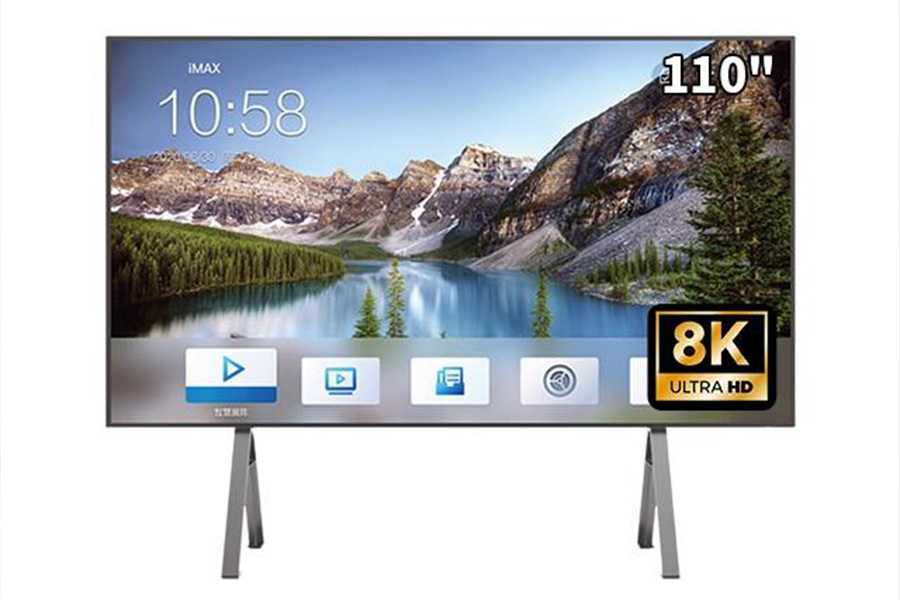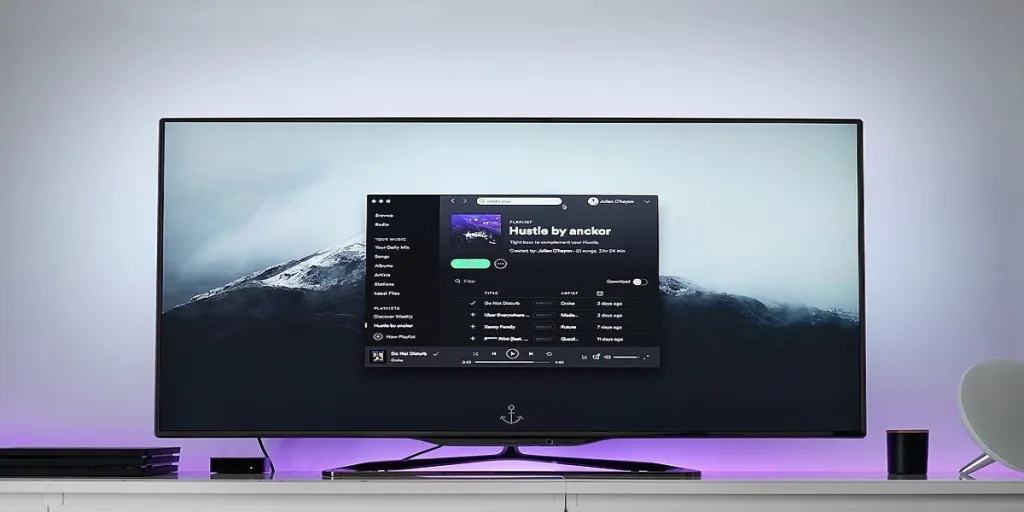Sales of smartphones reached record highs in 2021, yet despite the concern that the smartphone boom would decrease the market for smart TVs, smart TV sales have been expanding. They have rebounded in recent years, and the market shows a lot of potential for further growth. Read on to see why smart TVs are going to remain popular, and to learn about the smart TV trends that can help you capitalize on this growing market.
Table of Contents
Smart TV market forecast
A quick guide to selecting smart TVs
Popular smart TV trends in 2022
Getting smarter
Smart TV market forecast
Reports show that the number of households with a minimum of one TV is estimated to increase steadily year by year up to 2026, while the global smart TV market is expected to grow exponentially between 2021 to 2028. The projected compound annual growth rate (CAGR) for smart TVs up to 55 inches is 17.1%. However, a research report which expanded its global market forecast to include smart TVs above 65 inches revealed an even higher CAGR of 20.8% growth for the same period.
In general, significant price reduction in the smart TV market is credited as the key factor behind such rapid growth. The efforts from different TV manufacturers vying for a better, sharper viewing experience on top of launching more functions for their products is an appealing factor for consumers, while consumers themselves are gaining higher disposable incomes. This means that as smart TVs develop, so to does the market demand, where consumers enjoy the low prices and great features that result from the rivalry among TV manufacturers.
A quick guide to selecting smart TVs
With many kinds of smart TVs available, it can be difficult to select the best option on the market. However, there are a number of features to look out for that can ensure you make the best decision. Firstly, a smart TV gets its name from the interconnectivity that comes with it, so it must be easily connectable to Wi-Fi. It should be able to work just like a computer or smartphone, which means being able to download and install a full range of applications, in addition to many of its existing built-in apps. Apps like YouTube and Netflix for streaming content are very popular, while social media apps such as Facebook and Skype add a nice extra touch. Web browsing is another must-have feature, especially for savvy internet users.
Also, one can look out for other typical features of a smart TV, including casting or a screen mirroring function, where the screens of mobile devices can be displayed directly on the TV screen. Some smart TVs may also include voice control on top of the standard remote control. Others may provide different types of remote controls with functions such as a keyboard or touchpad or a remote control app included for easier navigation. These features should be available regardless of their operating platforms, although the most popular operating system for smart TVs nowadays is still Android.
And finally in terms of picture quality, ultra high definition or Ultra HD, which is also commonly known as 4K resolution, has become a norm for smart TVs. In fact, most smart TVs are heading towards QLED (quantum-dot light-emitting diodes), which is an improvement from LCD and even OLED technologies. These are some of the exciting developments that will define the smart TV industry, and for those looking to stock smart TVs, the next section will highlight the trends that consumers will be excited about this year and beyond.
Popular smart TV trends in 2022
TVs with gaming mode
While gaming mode isn’t a particularly new segment of smart TVs, the recently improved gaming mode features offered by smart TV manufacturers such as Samsung and LG have managed to attract attention from serious gamers. In terms of responsiveness, advanced gaming mode on smart TVs can reduce input lag, since the mode helps to cut down all the inessential, unneeded processes.
On top of lower input lag, smart TVs marketed as gaming TVs typically go the extra mile to ensure that gamers get the most out of their video game consoles. The enhanced gaming modes provide ease-of-use features, including increased refresh rate, an integrated gaming system with all selected games loaded, a one-touch bar for gaming, and simultaneous split screens for Youtube and games, as well as game optimization for selected game genres.

Gaming TVs can come in various sizes and they normally start with smaller screens such as a 32-inch smart TV with gaming mode. However, a smaller screen does not mean the screen resolution may be compromised due to the size limitation. For example, a 32-inch gaming mode TV may also come with an 8K resolution. And of course, there are some larger gaming TVs available on the market, such as this large screen smart TV with gaming mode.
Large screen TVs
There was a time when people were content with a simple 29-inch TV screen, but with 3D movies, IMAX screens, and virtual reality becoming standard features in the entertainment industry, small screens seem insufficient in comparison, and don’t always do justice to the quality and resolution of modern entertainment.
The rapid development of TV display technology is another driving factor behind the demand for large-screen smart TVs. As with the interconnectivity and screen mirroring functions, more content can be displayed clearly and sharply on larger TVs screens, which means larger screens will be a continuous trend in the industry. This also means that what were once considered large screens, such as 65-inch smart TVs, now pale in comparison to some of the sizes available now.
A 75-inch smart TV for example is now the entry-level size for some companies specializing in large-screen TV production. However, some large-screen TV manufacturers also produce smart TV with sizes of 95, 100 & 105 inches. Though not so commonly available yet, 110-inch 4K picture quality smart TVs are also available now.
<alt=“”>
Photo Credit: Guangzhou Home & Beauty Electronics Co., Ltd.
Crystal clear display
Clear TV display quality is something that almost every TV manufacturer aims to develop. That is why even 4K resolution is projected to be replaced by an 8K display by 2023. And this seems likely to be true as there are already plenty of wholesale 8K smart TVs available now, such as this free OEM logo smart TV.
In terms of display technology, there has been debate among industry experts concerning the quality of QLED and OLED displays. However, QLED, a technology pioneered by LG, offers a clear price advantage over OLED screens. This is in part because it was launched slightly earlier and is now more widely adopted. Also, OLED screens tend to come in a more limited number of sizes as a result of this.

However, 2022 has seen the introduction of a new resolution that will likely end the dispute between QLED and OLED. QD-OLED screens are supposed to be a hybrid of both of these display technologies. Samsung spearheaded this Quantum Dot-OLED technology and touted it to be able to cover the best of both worlds from these two existing display technologies. If it lives up to these expectations, QD-OLED may be on track to be the best quality smart TV, since it offers both the brightness and richness of QLED as well as the sharpness of OLED. Its pricing will remain on the high side though, until it becomes more popular and is manufactured in larger quantities.
Getting smarter
With lower prices and more connectivity features, as well as sharper display quality, the smart TV industry is projected to keep growing. The three most popular smart TVs categories in 2022 include smart TVs with a gaming mode, large screen smart TVs with screen sizes more than 65 inches, and finally smart TVs with advanced picture technologies and resolutions such as 8K resolution, QLED, and OLED technology. For those interested in learning more about smart TVs or to stock some of the best models available, check out the variety of smart TV models offered on Alibaba.com to see what’s on offer.




